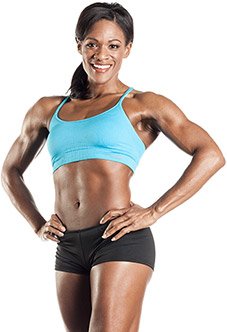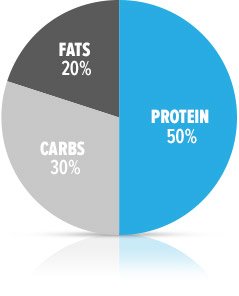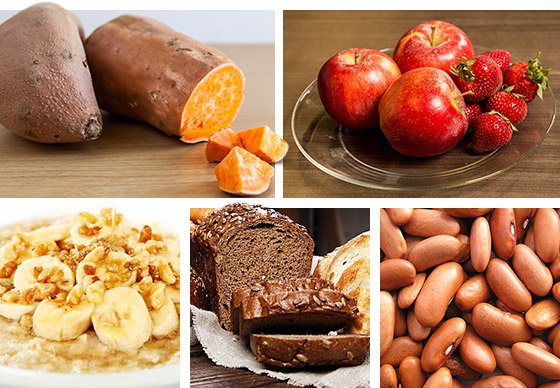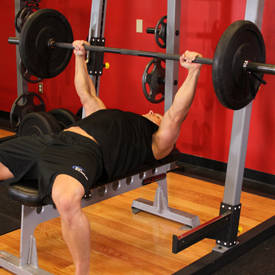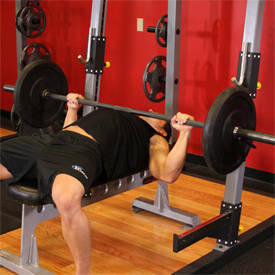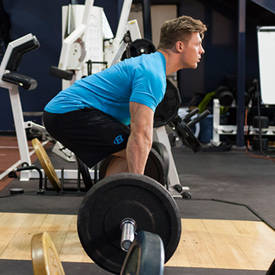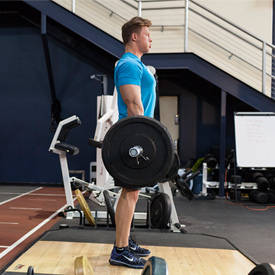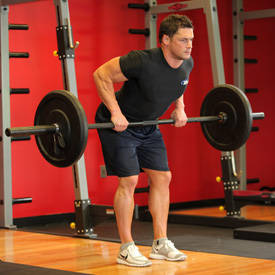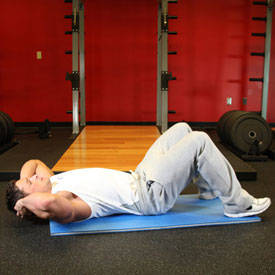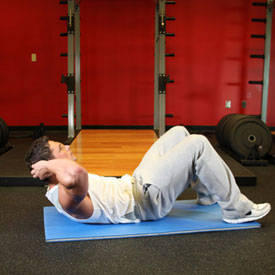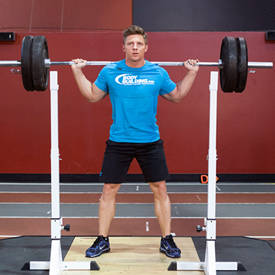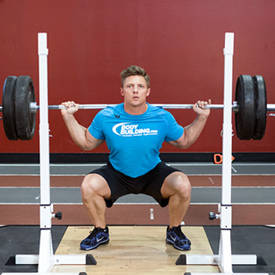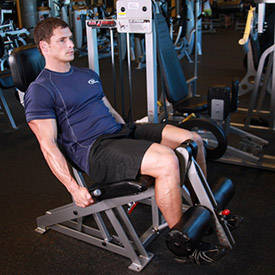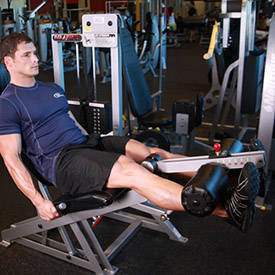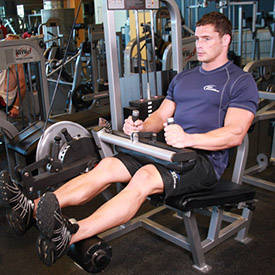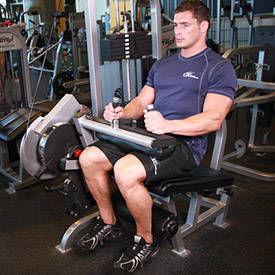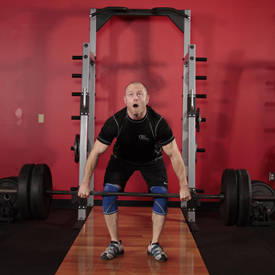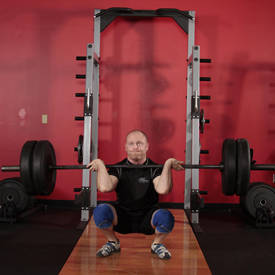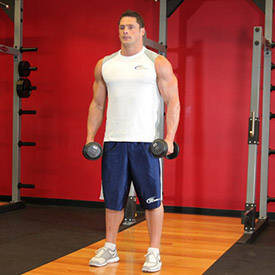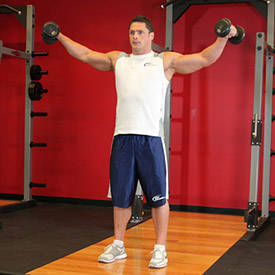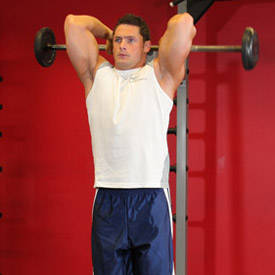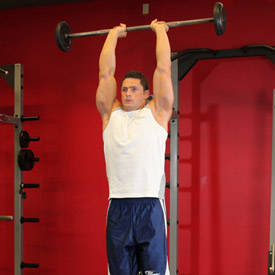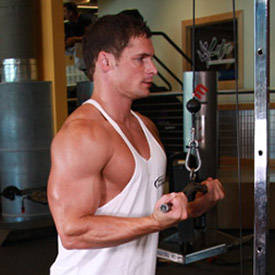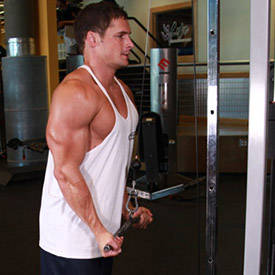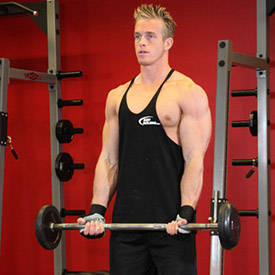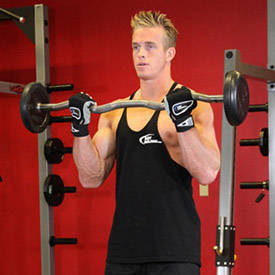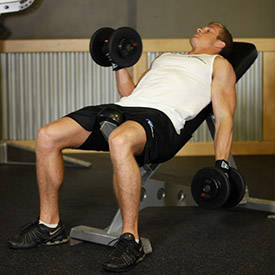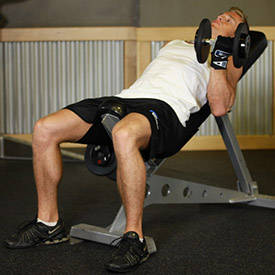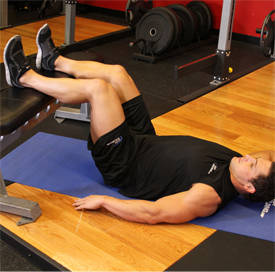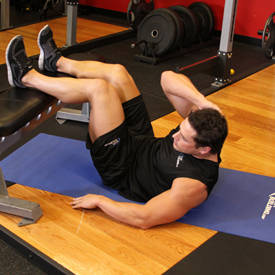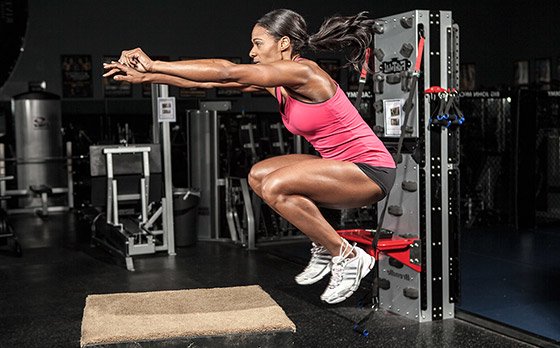Arnold hit every muscle group with unparalleled intensity. Build epic arms by following his principles and workouts!
Arm training for Arnold Schwarzenegger wasn't simply about hitting the gym and doing a few finishing sets. Not Arnold.
He hit every body part with mind-numbing intensity and developed every muscle group to its maximum. To build the massive upper appendages that allowed him to win seven Olympia titles, Arnold employed every trick in the bodybuilding book.
What follows is a detailed look at what arm-training techniques Arnold employed, as well as two programs, one basic and one advanced, based on the Oak's methods. Use them to develop your own massive guns, if you're up to the task!
ARNOLD'S ARM TRAINING PRINCIPLES
When aiming to build his arms, Arnold would use his brain and instincts as much as sheer strength. He advised all who aim for similar development to do the same. The following are some of the major principals he applied to arm training.
AIM FOR EQUAL DEVELOPMENT
Arnold always believed that since the arms can be seen from all poses and from every conceivable angle, they should be trained from all angles.
Arnold
"You don't develop championship-winning arms simply by throwing around a heavy barbell doing curls or blasting out some reps for triceps," he said. Clear visible development between all muscle of the arms with equally full muscle bellies and perfect balance is what Arnold constantly sought.
To achieve balance, proportion, size and shape in the arms, work all arm muscles with equal intensity. Break the individual muscles of the arms down into separate categories. This is where planning your arm training routine is all-important.
KEEP THINGS IN PERSPECTIVE
Although Arnold advocated training biceps, triceps, and forearms with equal intensity, he also liked to draw attention to the fact that the triceps are the larger and more complex muscle group of the upper arm. The biceps have two heads, while the triceps have three.
As such, Arnold suggested viewing your arm as being one-third biceps and two-thirds triceps, because while it is possible to hide your biceps in some poses, it is almost impossible to hide your triceps. Therefore, he advised, the triceps need to be trained from more angles. When training the triceps, use a variety of exercises to hit all three heads.
FOCUS
Concentrating on every rep of every set was something Arnold did religiously. It is often said that once Arnold began to focus on his set, nothing could distract him.
After training, Arnold was a lighthearted guy, but once in the gym he was all business. At no time was this more evident than when he trained his arms. Arnold would visualize what he wanted to achieve, believing that this would actually force gains in muscle size.
His visualization quote has been repeated countless times, but the image is vivid enough to deserve revisiting: "In my mind I saw my biceps as mountains, enormously huge, and I pictured myself lifting tremendous amounts of weight with these superhuman masses of muscle."
For anyone who wishes to gain boundless muscle size and shape, the power of the mind cannot be underestimated. It was Arnold's secret weapon in the fight for huge arms.
SHOCK THE MUSCLES INTO CHANGE
Arnold always believed that the body was amazingly adaptable and could "accustom itself to workloads that would fell a horse."
However, he knew that even training at a very high intensity level will elicit no new gains if it is all done in the same manner, with the same routines, day in and day out.
Arnold advised "shocking" the arms by integrating tricks like switching up weight amounts, adding reps and sets, speeding up training so as to lift more forcefully, decreasing rest between sets, performing unfamiliar exercises, and doing your normal exercises in an unfamiliar order.
To meet the overarching goal of keeping the muscles constantly guessing as to what each new training stimulus will bring, he also advocated integrating "intensity methods" such as:
Forced Reps: Forced reps are employed by having a training partner assist you with a final rep that would otherwise be impossible to achieve on your own. This method to shock the muscles should be used sparingly, perhaps once every second workout for one set per exercise.
Partial Reps: Except in the case of lying triceps work, partial reps can be completed without the assistance of a partner. To perform partial reps, continue with reps of decreasing range when muscle fatigue begins. For example, upon completing a set of barbell curls, continue with partial (half- or quarter-reps) until the bar can no longer be moved even an inch. Again, use this technique sparingly.
Negative Repetitions: This muscle-shocking technique can be incorporated two ways. The negative, or lowering half, of the repetition can be emphasized in the normal course of the workout, rather than just to set up the contracting, or raising. In the second method, a partner can assist a forced negative at the end of a hard set.
For partner assisted negatives, have someone assist you on the upward phase of the movement and complete the negative on your own. Do two to three such reps and then have your partner rack the weight.
While emphasizing the negative can, and should, be done often, forced negatives can be used every second or third workout to stretch out the muscle fibers and assist new growth. Negatives will also build ligaments and tendons faster than conventional reps and, in the long run, this will enable the muscle to lift heavier weight, which will translate into new growth.
USE PERFECT TECHNIQUE
To fully isolate the biceps muscle when curling, Arnold would advise newcomers to perform this movement with their backs against a wall. When doing strict curls he believed that the arms, and only the arms, were to do the work. Any other muscular involvement would dilute the isolating effect the exercise aimed to achieve.
"You also need to find the right groove, and do any curl movement through the longest range of motion," he said. "When you do a curl you must bring your hand directly up to your shoulder. If you change that line an inch to the inside or the outside, you are taking the stress off the biceps and you won't get the same results."
The same thing applies to triceps and forearm training. Engage each rep through its full range of motion in a controlled fashion for optimal results.
Arnold also believed hand grip to be all-important to his success. He would advice against starting off a curl movement by bending the wrist back and up. He said, "All this does is take stress away from the biceps by using forearm strength rather than biceps strength, and the result will be huge forearms and mediocre biceps."
CHEATING
Although he stipulated perfect form as a rule, Arnold saw cheating as an effective way to fully tax the muscles while arm training.
In fact, Arnold was one of the first advocates for cheating, and his mentor Joe Weider eventually standardized it as one of his Weider training principals.
Arnold's specific brand of "controlled cheating" was acceptable, he said, because it it actually made the exercise more difficult. Here's how he explained it in The New Encyclopedia of Modern Bodybuilding:
"Say you are doing a heavy barbell curl. You curl the weight up five or six times, and then find you are too tired to continue to do strict reps. At this point you begin to use you shoulders and back to help you in the lift slightly so that you can do another four or five reps. But you cheat just enough so you can continue the set, and your biceps continue to work as hard as they can. By cheating you have forced the biceps to do more work than they could have done without help from the other muscles, so you have to put more stress on them, not less."
The cheating method can also be applied to dumbbell curls and other curling variations.
USE SUPERSETS
Always a big believer in maximizing his time in the gym, Arnold often employed supersets in his training. He was especially noted for using this method to build his superior arms. The second arm workout featured in this article is comprised primarily of supersets that maximize stimulation of the biceps and triceps.
Supersets work to shock the muscles by compounding the stress the entire muscle grouping receives. This forces as much blood as possible into the target area, leading to superior growth.
PRIORITIZE WEAK POINTS
If you have a body part that is especially lagging, Arnold advised priority training it. This principal, when applied to arm training, is most often used by those with severely underdeveloped forearms, which are often a result of a genetic weakness more than anything else.
To prioritize weak forearms, Arnold suggested training them "by themselves when you are rested and strong." This can be done either before training any other arm muscle or on a separate day on their own. Alternatively Arnold suggested training lagging forearms on leg days when the rest of your arms are being rested.
However, even though you may do everything to plan and execute his suggestions perfectly, there may still be weak points that need specific attention. These should be targeted and should be trained accordingly. For biceps, triceps, and forearms Arnold recommended targeting weak points in several ways.
Use Dumbells: Using dumbbells with one arm at a time instead of barbells with both arms will allow a greater degree of focus to be applied on each side of the body. This helps to bring out the best in each individual set of muscles. Said Arnold: "Doing an entire set with just one arm at a time allows for maximum concentration and intensity, and ensures that each arm works to its maximum."
Start With Your Weakness: Training your weak point first will allow this muscle to work harder, as it will be fresher and more receptive.
Emphasize Technique: Maintaining correct form is even more difficult for a weak muscle group, as it will not often have sufficient strength to allow the weight to follow the correct movement arch. Therefore special emphasis must be placed on technique when training weak groupings.
POSING
One memorable scene from Pumping Iron shows Arnold flexing and posing his muscles between sets, when they are pumped to the limit. Arnold believed that posing between sets allowed him to gain mastery over the muscles he was training and lengthen the individual muscles for more complete development.
Running through the basic compulsory poses, ones that employ to a large extent the arms, and holding each pose for a minimum of three seconds, is one way to further peak contract them and flush them with blood.
CHANGE HAND POSITION
Arnold's proclivity for changing his workouts around to continually stimulate the muscles extended to his hands as well. He advised changing his hand spacing regularly, as the subtle differences caused by hand position can help to completely stimulate all the different areas of a muscle.
This can be applied to biceps, triceps and forearms training as a further way to shock the muscles into new growth. For example, biceps and wrist curls and pressdowns can be done with a wide, narrow, reverse or medium grip.
ARNOLD'S RECOMMENDED ARM EXERCISES
BICEPS
FOR HEIGHT (OR PEAK)
Concentration Curls
Arnold Curls
Note: To perform Arnold Curls, begin movement with knuckles facing forward. Simultaneously curl the weight while turning hand into a supinated position - with little fingers facing outer arms - and end with a peak contraction. Performance key: Always supinate the wrist - with each rep on concentration or Arnold curls, turn the little finger outward (toward outer forearm) for a peak contraction.
FOR OVERALL MASS WITH AN EMPHASIS ON OUTER THICKNESS
Wide-grip standing barbell curl
Alternate hammer curl
Wide-grip preacher curl
Alternate incline dumbbell curl
TRICEPS
FOR OVERALL MASS
Close-grip barbell bench press
Dips - triceps version
Lying close-grip barbell triceps extension behind the head
Bench dips
FOR OVERALL MASS WITH AN EMPHASIS ON UPPER TRICEPS
Triceps pushdown
Reverse grip triceps pushdown
Kneeling cable triceps extension
Tricep dumbbell kickback
FOREARMS
FOR UPPER FOREARMS (OR WRIST EXTENSOR MUSCLES)
Reverse barbell curl
Alternate hammer curl
Seated dumbbell palms-down wrist curl
FOR INNER FOREARMS (OR WRIST FLEXOR MUSCLES):
Seated dumbbell palms-up wrist curl
Standing palms-up barbell behind the back wrist curl
THE ARNOLD ARM WORKOUTS
The following 30-minute basic routine is not as complex or extensive as Arnold's superset routine (to follow). Done once each week, it works to lay the foundation for the additional separation and refining targeted in his advanced routine.
ARNOLD'S BASIC ARM WORKOUT
1
BARBELL CURL
2 sets of 8 to 12 reps
Barbell Curl Barbell Curl
2
FLEXOR INCLINE DUMBBELL CURLS
3 sets of 8 to 12 reps
Flexor Incline Dumbbell Curls Flexor Incline Dumbbell Curls
3
CONCENTRATION CURLS
2 sets of 8 to 12 reps
Concentration Curls Concentration Curls
4
CLOSE-GRIP BARBELL BENCH PRESS
3 sets of 8 to 12 reps
Close-Grip Barbell Bench Press Close-Grip Barbell Bench Press
5
DIPS - CHEST VERSION
3 sets of 8 to 12 reps
Dips - Chest Version Dips - Chest Version
6
TRICEPS PUSHDOWN
3 sets of 8 to 10 reps
Triceps Pushdown Triceps Pushdown
7
STANDING DUMBBELL REVERSE CURL
3 sets of 8 to 12 reps
Standing Dumbbell Reverse Curl Standing Dumbbell Reverse Curl
8
SEATED DUMBBELL PALMS-UP WRIST CURL
3 sets of 8 to 12 reps
Seated Dumbbell Palms-Up Wrist Curl Seated Dumbbell Palms-Up Wrist Curl
ARNOLD'S ADVANCED ARM WORKOUT
The following workout is one that Arnold actually used during his peak years in the early to mid-70s.
Due to its intensity, I would recommend performing it either as as the first or second session of a daily split, or on a separate day by itself. Arnold's superset routine encourages ultimate muscle separation while further building mass and enhancing shape.
This workout is also assumes that forearm training will be done, as Arnold suggested, on a separate training day to prioritize this stubborn grouping.
ADVANCED ARNOLD FOREARM WORKOUT
1
SEATED DUMBBELL PALMS-UP WRIST CURL
4 sets of 8 to 12 reps
Seated Dumbbell Palms-Up Wrist Curl Seated Dumbbell Palms-Up Wrist Curl
2
SEATED DUMBBELL PALMS-DOWN WRIST CURL
4 sets of 8 to 12 reps
Seated Dumbbell Palms-Down Wrist Curl Seated Dumbbell Palms-Down Wrist Curl
3
STANDING PALMS-UP BARBELL BEHIND THE BACK WRIST CURL
4 sets of 8 to 12 reps
Standing Palms-Up Barbell Behind The Back Wrist Curl Standing Palms-Up Barbell Behind The Back Wrist Curl
ADVANCED ARNOLD BICEPS AND TRICEPS WORKOUT
SUPERSET
1
BARBELL CURL
4 sets of 10 to 12 reps
Barbell Curl Barbell Curl
LYING TRICEPS PRESS
4 sets of 10 to 12 reps
Lying Triceps Press Lying Triceps Press
SUPERSET
2
ALTERNATE HAMMER CURL
4 sets of 10 to 12 reps
Alternate Hammer Curl Alternate Hammer Curl
TRICEPS PUSHDOWN
4 sets of 10 to 12 reps
Triceps Pushdown Triceps Pushdown
SUPERSET
3
INCLINE DUMBBELL CURL
4 sets of 10 to 12 reps
Incline Dumbbell Curl Incline Dumbbell Curl
KNEELING CABLE TRICEPS EXTENSION
4 sets of 10 to 12 reps
Kneeling Cable Triceps Extension Kneeling Cable Triceps Extension
SUPERSET
4
CONCENTRATION CURLS
4 sets of 10 to 12 reps
Concentration Curls Concentration Curls
STANDING ONE-ARM DUMBBELL TRICEPS EXTENSION
4 sets of 10 to 12 reps
Standing One-Arm Dumbbell Triceps Extension Standing One-Arm Dumbbell Triceps Extension
5
BENCH DIPS
2 sets of 26 reps
Bench Dips Bench Dips


 A BODYBUILDER from Russia with Popeye-like biceps has been slammed for his controversial bulking method that doesn’t involve eating spinach.
Kirill Tereshin, from Pyatigorsk in south western Russia’s Stavropol Krai region, attracted attention for his huge 60 centimetre biceps developed after he injected a deadly bulking oil.
The 21-year-old used a site enhancement oil, commonly known as synthol, after leaving the army earlier this year and his biceps increased in size by 26 centimetres in just 10 days.
The bodybuilding community is largely against the use of synthol because it looks unnatural. Picture: CEN/Australscope
The bodybuilding community is largely against the use of synthol because it looks unnatural. Picture: CEN/Australscope
Despite the fact his biceps are completely out of proportion with the rest of his body, he plans to continue with his risky regimen in a hope to break body building records.
Mr Tereshin first started by injecting 250ml into his biceps, but decided to up the dose when his gains plateaued at three centimetres.
“In order to reach such a size, you need to inject litres into your arms,” he told The Sun.
The 68kg bodybuilder said his weight increased by six kilograms since he started taking the injections, but it wasn’t without side effects.
“I was doing it and getting a fever of up to 40 degrees, I was lying in bed, feeling like I was dying, but then it all turned out fine,” he said.
He was injecting litres into his arm. Picture: CEN/Australscope
He was injecting litres into his arm. Picture: CEN/Australscope
Synthol is a blend of oil (85 per cent), painkillers and alcohol, and once injected expands between muscle fibres and hardens. However, as it breaks down overtime users need to keep injecting.
According to a 2015 research article in the Journal of Health Psychology, risks attached to the drug include nerve damage, skin problems, oil-filled cysts, muscle damage, stoke and the development of scar tissue.
The most common use of synthol is for smaller muscles such as the biceps, triceps and calves, although it may be used for the shoulders in extreme instances.
Has to be tough finding T-shirts. Picture: CEN/Australscope
Has to be tough finding T-shirts. Picture: CEN/Australscope
In the bodybuilding community, the use of synthol if considered cheating as no hard training or dieting is required to gain mass.
“The physical appearance achieved through the use of synthol is not very aesthetically pleasing,” explained Mr Supplement on its website.
“As a result of injecting synthol, the end result is often what looks like an unnatural mutation in the arms or shoulders, covered in lumps and bumps.
“It’s very hard to fool people into believing it is 100 per cent natural muscle due to the fake, lumpy and puffy look that it induces in the muscle.”
Continue the conversation in the comments below or with Matthew Dunn on Facebook and Twitter.
read next
Act of kindness to couch intruder
GORDON Pryor woke to find this young man sleeping on his couch. His heartwarming response has made him a viral sensation.
SOCIAL
A BODYBUILDER from Russia with Popeye-like biceps has been slammed for his controversial bulking method that doesn’t involve eating spinach.
Kirill Tereshin, from Pyatigorsk in south western Russia’s Stavropol Krai region, attracted attention for his huge 60 centimetre biceps developed after he injected a deadly bulking oil.
The 21-year-old used a site enhancement oil, commonly known as synthol, after leaving the army earlier this year and his biceps increased in size by 26 centimetres in just 10 days.
The bodybuilding community is largely against the use of synthol because it looks unnatural. Picture: CEN/Australscope
The bodybuilding community is largely against the use of synthol because it looks unnatural. Picture: CEN/Australscope
Despite the fact his biceps are completely out of proportion with the rest of his body, he plans to continue with his risky regimen in a hope to break body building records.
Mr Tereshin first started by injecting 250ml into his biceps, but decided to up the dose when his gains plateaued at three centimetres.
“In order to reach such a size, you need to inject litres into your arms,” he told The Sun.
The 68kg bodybuilder said his weight increased by six kilograms since he started taking the injections, but it wasn’t without side effects.
“I was doing it and getting a fever of up to 40 degrees, I was lying in bed, feeling like I was dying, but then it all turned out fine,” he said.
He was injecting litres into his arm. Picture: CEN/Australscope
He was injecting litres into his arm. Picture: CEN/Australscope
Synthol is a blend of oil (85 per cent), painkillers and alcohol, and once injected expands between muscle fibres and hardens. However, as it breaks down overtime users need to keep injecting.
According to a 2015 research article in the Journal of Health Psychology, risks attached to the drug include nerve damage, skin problems, oil-filled cysts, muscle damage, stoke and the development of scar tissue.
The most common use of synthol is for smaller muscles such as the biceps, triceps and calves, although it may be used for the shoulders in extreme instances.
Has to be tough finding T-shirts. Picture: CEN/Australscope
Has to be tough finding T-shirts. Picture: CEN/Australscope
In the bodybuilding community, the use of synthol if considered cheating as no hard training or dieting is required to gain mass.
“The physical appearance achieved through the use of synthol is not very aesthetically pleasing,” explained Mr Supplement on its website.
“As a result of injecting synthol, the end result is often what looks like an unnatural mutation in the arms or shoulders, covered in lumps and bumps.
“It’s very hard to fool people into believing it is 100 per cent natural muscle due to the fake, lumpy and puffy look that it induces in the muscle.”
Continue the conversation in the comments below or with Matthew Dunn on Facebook and Twitter.
read next
Act of kindness to couch intruder
GORDON Pryor woke to find this young man sleeping on his couch. His heartwarming response has made him a viral sensation.
SOCIAL





